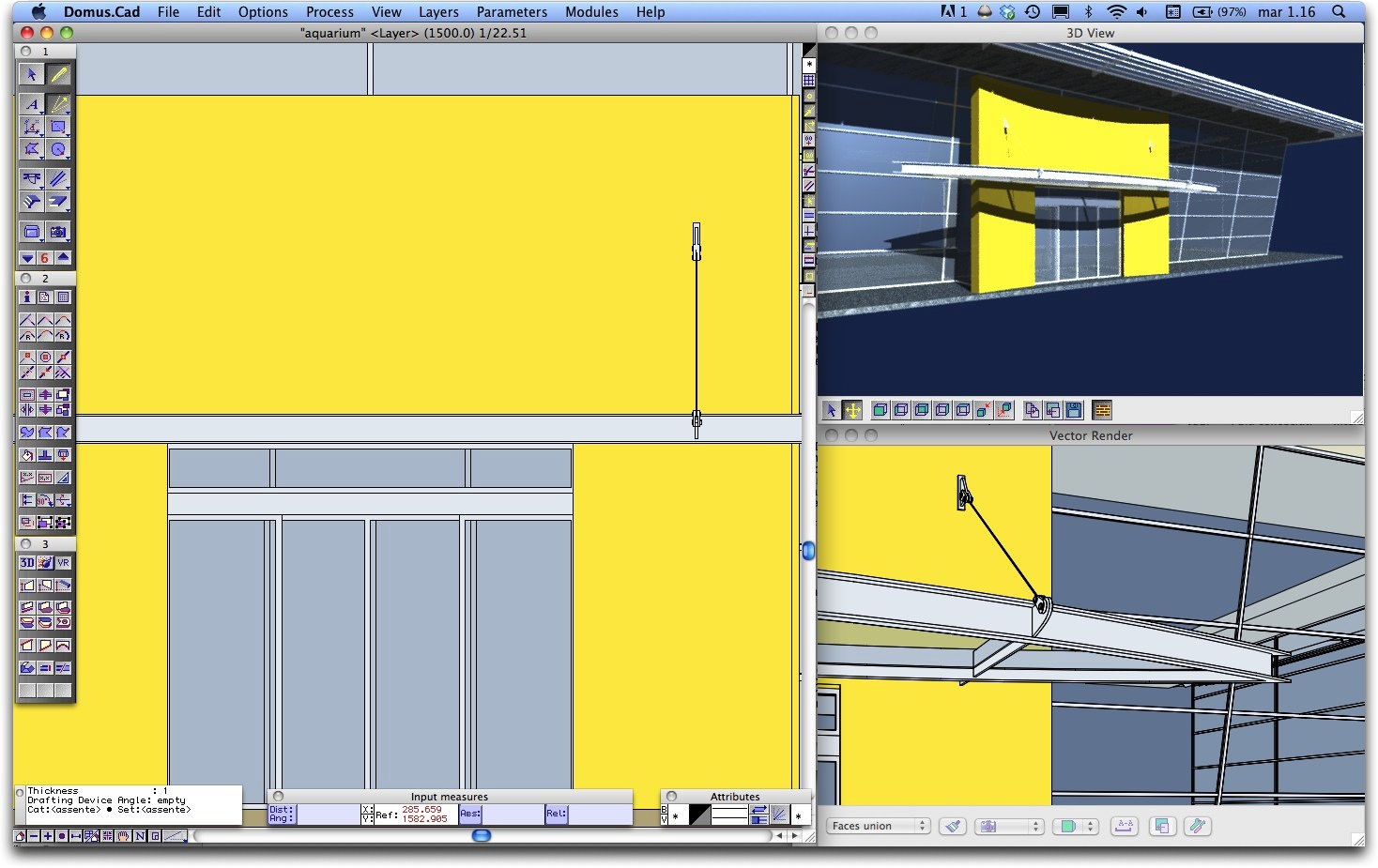

You can import documents in XYZ-ASCII format and drawings in DWG, DXF, CXF, PICT, (Mac), BTM (Win) and WMF (Win). The digitized drawing or transformed image can be transferred to other applications using cut-and-paste, filed in GIF, JPEG, TIF, PICT, BTM, 3D DXF or DWG, ASCII XYZ, Minicad, Domus.Cad and others graphic formats. Textures selected for use on 3D elements with a rendering program must be completely flat.ĭIGICAD 3D has extremely flexible procedures for importing and exporting, which make it compatible with all other programs. On technical and architectural drawings it is possible to insert reference markers and to block horizontal, vertical, perpendicular or parallel scrolling.Ī special calculator computes from drawings and existing documents a varied and large amount of data, such as lengths, areas, barycenters, static moment, costs, volumes, coordinates, angles – data which can then be elaborated by mathematical or financial programs, spreadsheets, etc.ĭIGICAD 3D is the ideal tool for creating textures from photos of facades or construction details, decorations, paintings and even whole facades for use on simplified 3D models. You can also superimpose, join or modify portions of drawings using the automatic Re-attach procedures. It is possible to use large format drawings, notwithstanding the size of your tablet, scanner or the image itself. It is compatible with all major programs and has no problem in accepting drawings and photographs in any format and measuring 2D and 3D geometric values. DigiCad 3D allows one to work on maps joining and superimposing raster and vectorial maps and to define any kind of mapping coordinate references.ĭigiCad 3D can digitize from graphic tablets, digitizers or directly on screen, from scanned images or digital photos. Wide-angle, or other special lenses can cause serious optical deformation to images straight lines can become curves and a flat surface can take on the familiar 'barrel' or 'cushion' appearance.ĭigiCad 3D can eliminate this type of deformation, by using the Mesh function.Īs with images, so maps can have perspective distortion eliminated, removing distortions on the support material or errors in copying, scanning and printing. If a part of the original photo is perfectly rectangular, then the two extremes of the diagonal are sufficient as attach points.Īpproximated transformation without measurementsĮven without precise or detailed measurements, it is possible to make an attempt at transformation, using those elements held to be vertical or horizontal. The accuracy of the mosaic is guaranteed by the common origin of the fixed measurements, by the transparency of the images and by their delimitation.ĭIGICAD 3D 7.0 can also join a number of images with missing parts.įour attach points are not always necessary to transform an image. You can join confining or superimposed images such as construction details within a building facade, or two maps scanned to different scales. An opaque image obviously covers whatever is beneath it. For example, you could superimpose a particular construction detail over a technical drawing or one map over another. A transparent image can be superimposed on drawings or other images and is totally see-through. Transparent imagesResulting images can be transparent or opaque. This function, along with the new possibilities for transparency described below, enables you to select relevant details from the original images or photos – construction details, decoration, frescoes, special materials, damaged elements, etc. It is possible to transform just a part of an image, delimited by a polygon, drawn either on the original image or where it is to be transformed. So you have total control and increased flexibility – you can check the accuracy of your data as you work. In the second case, if the original image is digitized, the Dynamic Attach feature allows you to view both the digitized drawing and the straightened drawing on screen at the same time. In the first instance, you obtain a new image without perspective distortion and to scale.

It is used in photogrammetry, cartography and, increasingly in recent years, in architectural photogrammetry, for which it offers powerful, easy-to-use and exclusive instruments, like elimination of perspective distortion from flat and curved surfaces, elimination of optical deformation, mosaics, correction and geo-referencing of maps, straightening up curved surfaces, transparency control and others.īased on four or five fixed points of reference, you can operate directly on the image or on elements drawn on the image. DigiCad 3D will operate either directly on raster images or by digitization. An excellent tool for dealing with images, drawings, photographs of building facades and maps.


 0 kommentar(er)
0 kommentar(er)
